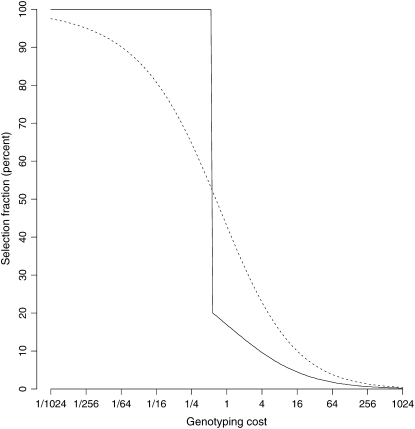Figure 7.—
Optimal selection fraction as a function of genotyping cost for exponentially distributed waiting-time phenotypes. We assume a one-tail selective genotyping scheme is being used. The cost of genotyping is measured relative to the cost of raising and phenotyping, assuming everyone is followed up with no censoring. The dotted line gives the optimal selection fraction for two-tail selective genotyping when the trait is normally distributed. As expected, it is more efficient to genotype less as the cost of genotyping increases relative to raising and phenotyping. However, for one-tail selective genotyping there is a “phase transition” or a sudden change in the optimal fraction when the cost of genotyping is comparable to the cost of phenotyping and raising (by contrast, the change is gradual with traditional two-tail selective genotyping). The best strategy is to genotype everyone or <20% of the individuals depending on genotyping cost.

